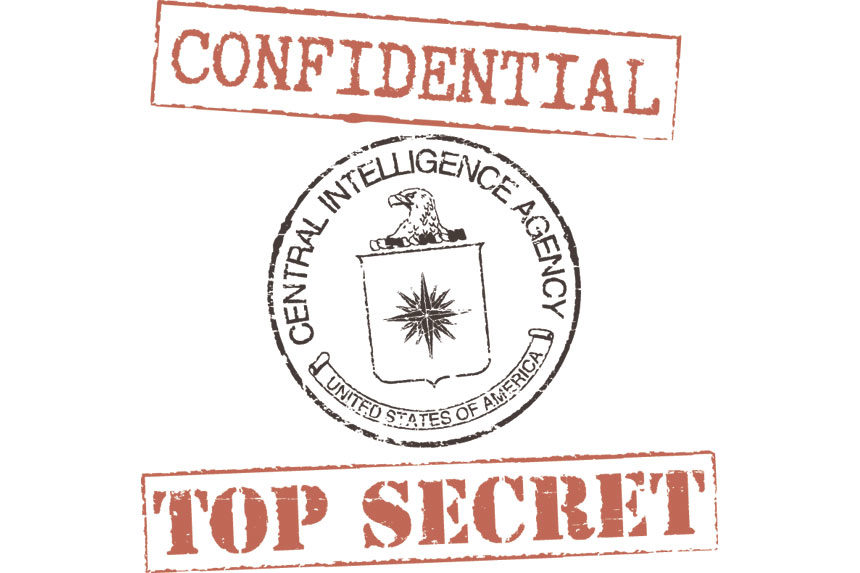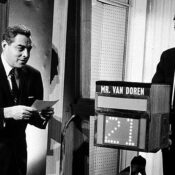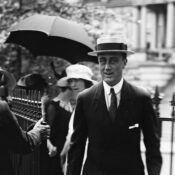In August of 2012, Wikileaks founder Julian Assange sought asylum at London’s Ecuadorian Embassy after fleeing the United States in the wake of the Iraq Logs Information Leak, where he published hundreds of thousands of documents detailing war crimes that the U.S. government had allowed to occur during the Iraq War. Ten years later, that leak still remains the largest in American history, based on the volume of classified documents released.
Since its founding, the United States has been plagued by hundreds of leaks of classified national security information, ranging from military operations to political cover-ups. Here are the 11 largest leaks, in chronological order, based on the vastness of information leaked and the impact they had on the nation.
1. The Hutchinson Letters (1772)
The earliest large information leak in American history occurred before the United States was an actual nation. However, it had a profound impact on turning the thirteen colonies toward revolution.
While he was residing in London, Benjamin Franklin was sent a package containing 13 letters between Massachusetts Governor Thomas Hutchinson, Lieutenant Governor Andrew Oliver, and English military authorities. The letters detailed the ongoing conflicts in the colonies as a result of taxation that the colonists deemed unjust, as well as Hutchinson’s recommendation to English officers that more soldiers be sent to keep colonists under control and gradually roll back personal liberties until they fell in line.
Horrified by the letters’ content and implications, Franklin sent them to fellow revolutionary leader Samuel Adams so that the Boston Committee of Correspondence could take appropriate action. However, he requested that the letters not be released for fear that they would create a dangerous public uproar. Against Franklin’s wishes, the Committee published the letters in the Boston Gazette.
The letters’ release immediately caused a public panic and a civil revolt in Boston as colonists clamored for Hutchinson and Oliver to be removed and for British troops to exit the city. This heightened anger amongst the colonists and sped up the clashes between them and British officers that would later lead to the infamous battles at Lexington and Concord.
Although it was far from the sole cause of Revolution, the Hutchinson Letters Leak certainly accelerated the process. However, the leaker who sent Franklin the letters was never found.
2. The Treaty of Guadalupe Hidalgo (1848)
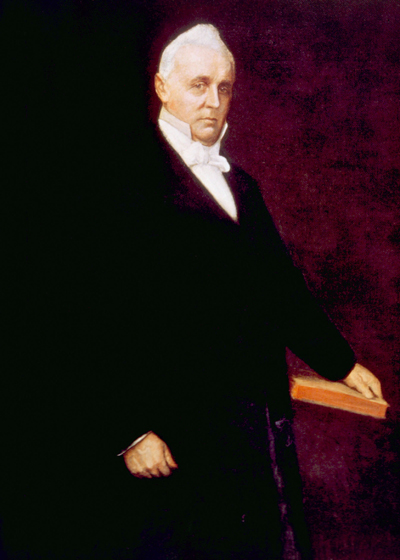
The Mexican-American war was nearing its end when it was hit with a leak whose goal was holding the U.S. government accountable.
As it became apparent that the United States would emerge victorious from the war, both sides agreed to sign The Treaty of Guadalupe Hidalgo, which would give the U.S. fifty percent of Mexican territory, including present-day states California, Texas, Nevada, Utah, Colorado, and New Mexico. However, the treaty was not without controversy. Under the terms, Texas would enter the United States as a slavery-allowing state, which would upset the balance of slave states and free states in the Union.
Hoping to prevent Texas from maintaining their practice of slavery, which had been legal under Republic of Texas law, an anonymous source leaked a classified copy of the treaty to John Nugent, a reporter for the New York Herald. Nugent published the treaty, leading to widespread public outcry in the North and accelerating debate on the allowance of slavery in American territories.
Although the leak failed to prevent another slave state from joining the Union, things worked out for Nugent; he was given several high-profile jobs by President James Buchanan years after the leak, which made sense considering that evidence indicates it was then-Secretary-of-State-Buchanan who leaked the treaty in the first place.
3. The Antietam Leak (1862)
The most important accidental leak in American history occurred just before the Battle of Antietam, the bloodiest single day in the Civil War. In fact, the leak not only provided the Union army with enough information to win the battle, but also allowed them to completely expel Robert E. Lee’s forces from Virginia.
On September 13, the 27th regiment from Indiana set up camp in Frederick, Maryland. Fortunately for the Union, several Confederate regiments had camped there days before. While pitching tents, Sergeant John Bloss and Corporal Barton Mitchell chanced upon a package of three cigars, which happened to be wrapped in a copy of the Confederate operation plan for the impending battle. Bloss and Mitchell passed the plan, which detailed the Confederate troop positions and where they would cross the Potomac River, to adjutant general Samuel Pittman, who verified that the plan was genuine after recognizing the handwriting of Lee’s adjutant general Robert Chilton.
The plan was given to Union General George McClellan. However, while he believed his force could easily defeat Lee’s, he feared that there were other Confederate troops he was unaware of, and thus waited 18 hours to start the Union attack. Ultimately, while his decision to stall allowed Lee’s troops to gain more advantageous positioning, the leak still proved to give an immense upper hand to the Union army, who lost more men in the battle but succeeded in routing the Confederate invasions of both Virginia and Maryland. In fact, the victory was so important to the Union cause that it encouraged President Abraham Lincoln to issue the Emancipation Proclamation. All thanks to someone who didn’t properly dispose of their cigars.
4. Theft of Atomic Bomb Information (1944)
In 1941, Great Britain ordered research and development to begin on an atomic bomb. They were soon joined in their efforts by the Allied Powers, including the United States, who founded the now-well-known Manhattan Project to develop the weapon. Even though the project was supposed to remain top secret, the Soviet Union knew that something was afoot. Desperate not to let the other Allies have access to the second-deadliest weapon in history without one of their own, the Soviets sought a leak. One was not hard to come by.
Although the Federal Bureau of Investigation claims there were over a dozen instances of Americans and Britons funneling atomic bomb information to Russia, perhaps the most important was the leak carried out by Klaus Fuchs, a primary physicist on the Manhattan Project. Originally from Germany, Fuchs had joined the Communist Party as a teenager and later worked for the nuclear programs in Britain and the U.S.
Hoping to help the Soviets with whom he ideologically agreed, Fuchs authored a letter in 1944 to Soviet military leaders in Moscow detailing precisely how to construct an atomic bomb similar to the United States’. Fuchs carried out the leak without federal authorities suspecting anything was amiss. The United States did not discover that there had been a leak until five years later, when the Soviet Union did a test detonation of a prototype of the bomb. After the test explosion, Fuchs penned letters to both Congress and Parliament confessing that he was a spy. He was arrested by British authorities and convicted on four counts of divulging confidential information. He served 14 years in prison.
5. The Pentagon Papers (1971)
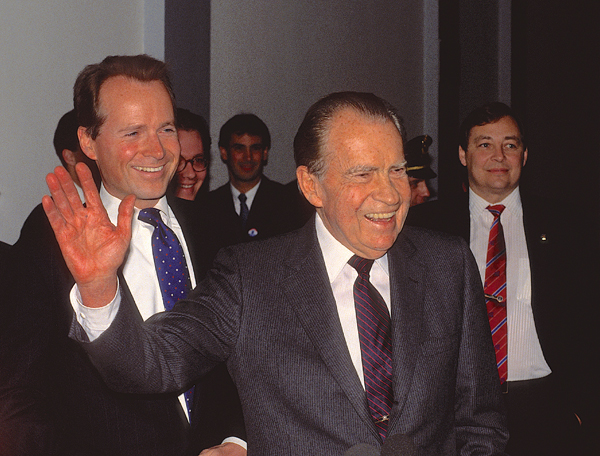
This leak remains one of the most important in America’s history because of its deep entanglement with foreign conflicts and the U.S. judicial branch.
In 1967, Secretary of Defense Robert S. McNamara commissioned “The Pentagon Papers,” a 7,000-page description of America’s role in the Indochina conflicts, specifically the Vietnam War, from the end of World War II through the start of the following year. The papers included evidence that four presidential administrations, but particularly the Johnson Administration, had systematically lied to the public and to Congress about their military operations in the region.
Military Analyst Daniel Ellsberg, who had been a vocal critic of the U.S.’s continued involvement in Vietnam, made a copy of the Pentagon Papers and leaked it to The New York Times to hold the administrations accountable for their deceptions. The Times began publishing the papers en masse, until the U.S. Justice Department filed a restraining order. The DOJ claimed that continuing to publish the Pentagon Papers would harm national security efforts. Arguing that the White House was just trying to cover up its misdeeds, The Times fought the order until the Supreme Court ruled in a landmark decision that newspapers were free to continue publishing the Pentagon Papers’ contents. It was the first time the Supreme Court had directly approved a leak of classified defense information.
The leak’s revelations of unethical actions by the U.S. government led to even greater public disfavor for the Vietnam War. It was also a major humiliation for current president Richard Nixon, who sought retribution against Ellsberg with a variety of criminal actions that came to light during the investigation into the next leak.
6. Watergate (1972)
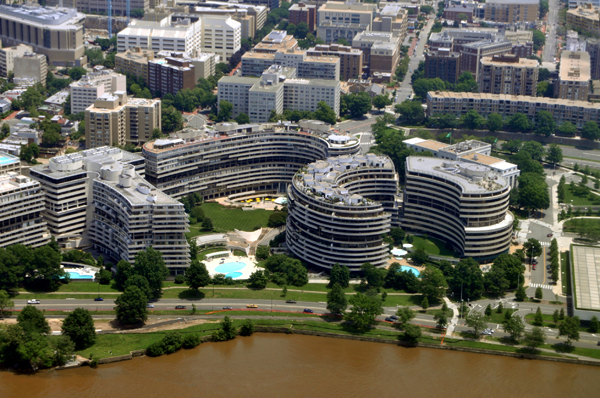
Perhaps the most well-known information leak in the history of the United States, the Watergate scandal not only revealed more unethical actions taken by the Nixon administration during the Pentagon Papers leak, but also contained not one, but two leaks of its own.
The scandal began when police apprehended five burglars attempting to rob the Democratic National Convention offices, which at the time were located in the Watergate Hotel complex. It was discovered that the criminals were all United States security operatives, and that they had been attempting to steal records from and plant surveillance equipment in the office of likely Democratic presidential nominee George S. McGovern.
Although it was widely believed that the Nixon administration was involved in the crime, White House officials denied ordering the burglary and release of information. They also denied participating in a cover-up of investigations into the burglary that included allegations of evidence destruction and accusations that the White House had helped one of the burglars escape law enforcement’s reach.
However, Nixon’s claims of noninvolvement were disproven when an anonymous government official leaked “The Nixon Tapes,” a series of recordings that Nixon had secretly made of approximately 3,700 Oval Office conversations, to reporters at The Washington Post. On the tapes, Nixon could clearly be heard ordering the FBI to lessen their investigation into the Watergate break-in. Other recordings detailed Nixon’s orders for officials to plant evidence framing Daniel Ellsberg of the Pentagon Papers leak for various crimes.
Certain that the substantial evidence against him would result in impeachment, conviction, and removal from office, Nixon instead elected to resign. He was later pardoned for his role in the attempted Watergate leak by President Gerald Ford.
Decades later, the leaker of The Nixon Tapes later revealed himself to be FBI Deputy Director Mark Felt Sr.
7. The Plame Affair (2003)
In February 2002, Joseph Wilson, former U.S. ambassador to Gabon, traveled to Niger under orders from the CIA to investigate claims that Iraqi military officers had purchased nuclear materials from the country.
Although Wilson claimed upon his return that there was not significant evidence to support this belief, President Bush declared in his State of the Union that the opposite was true. The invasion of Iraq began less than two months later.
Wilson, feeling the American people had been misled, published an article in The New York Times where he accused the Bush administration of misconstruing facts to exaggerate the threat posed by Iraq.
In what federal prosecutors later described as an act of revenge, a member of Bush’s White House, later confirmed to be vice presidential chief of staff Lewis Libby, leaked to columnist Robert Novak that Valerie Plame, Wilson’s wife, was a CIA operative on weapons of mass destruction. This major revelation of confidential information was considered extremely dangerous, because it put Plame, as well as other secret operatives, at immense risk.
The leak led to a federal investigation as to how information on the nation’s most secretive intelligence agency had been made so readily available. Reporter Judith Miller was arrested for failing to reveal her sources, but the investigation ultimately uncovered Libby as the leak’s probable origin.
8. The Downing Street Memo (2005)
This scandal began when a member of then-British Prime Minister Tony Blair’s cabinet leaked a confidential briefing, the titular “Downing Street Memo,” that had been given to Blair eight months before the U.S. invaded Iraq.
The memo implied that the Bush White House had intentionally doctored facts and intelligence to justify President Bush’s desire to remove Saddam Hussein from power through military force. The memo also seemed to indicate that the United States military had knowingly defied requests by the United Nations to hold off on pursuing an invasion of Iraq.
Five days before Blair’s re-election, British reporter Michael Smith published the entire leaked memo, which galvanized anti-war protesters across the U.K. and the United States, where the public believed that they had been manipulated into conflict. Today, the memo has been used as an example to support a belief by those who oppose U.S. involvement in the Middle East, including the United Nations, that the U.S.’s presence there is based on falsehoods.
9. The Iraq Logs/Wikileaks (2010)
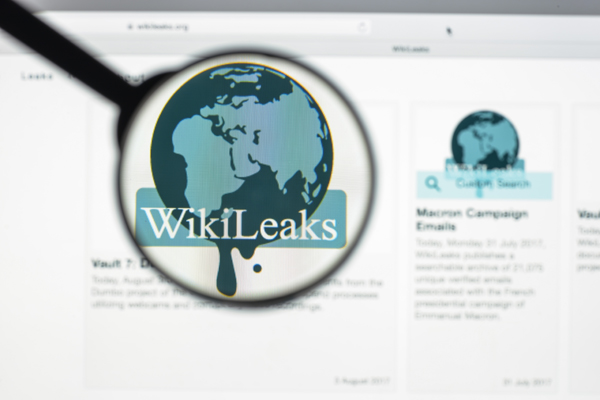
Wikileaks was founded by Julian Assange in 2006. At the time, he said it was “a mechanism to maximize the flow of information and action leading to just reform.” This belief was put to the test in 2010, when the website obtained and released nearly 400,000 classified documents about the Iraq War.
The “Iraq Logs” suggested that both the U.S. and Iraqi militaries had sanctioned the torture of enemies in the Iraq War, a direct breach of Geneva Convention international law, and that both sides had willingly caused the deaths of 15,000 Iraqi civilians. It increased international criticism of the war, and raised questions about legal consequences for the leaders and militaries of both countries.
The leak was immediately criticized by both the U.S. and Iraqi governments, who claimed that the information would put civilian lives at risk. Assange said that there was no evidence to support the claim. Assange fled the U.S. before he could be prosecuted for releasing the documents and was granted asylum by the Ecuadorian embassy in London, England. He remained under protection from the Ecuadorian embassy until his asylum was revoked in 2019. He was then arrested by London authorities. Assange remains imprisoned in London. He is actively appealing attempts by London authorities to extradite him to the U.S., where he would stand trial for over 17 felonies.
10. Edward Snowden and PRISM (2013)
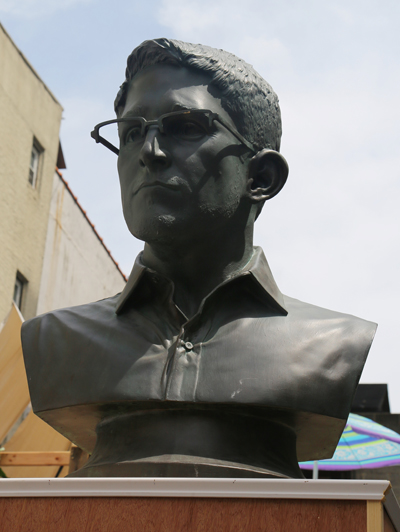
Referred to as “The Edward Snowden leak” or “The PRISM leak,” the incident began when Snowden, an intelligence contractor in Hawaii, turned 7,000 classified documents over to various reporters in a Hong Kong hotel. Although the documents dealt with several National Security Agency programs, the most prominent was an operation called PRISM.
According to Snowden’s files, PRISM was a tool created for the NSA by the 2007 Patriot Act that collected personal information on all American citizens who used Microsoft, Facebook, Yahoo, Apple, and several other companies.
In the wake of the leak, the NSA claimed that PRISM was only used in criminal cases, and that it was never used on law-abiding citizens. However, it did not undo the damage that had been done to the public faith. In the wake of the leaks, many pro-privacy protests occurred, and many of the companies involved in PRISM lost substantial revenue from users who severed their ties, fearing their personal information had been compromised.
As for Snowden, he was charged with treason under the Espionage Act. He fled from Hong Kong to Moscow, Russia, where he has resided since. The Snowden leak was one of few in American history where the leaker revealed themselves instead of being uncovered by a federal investigation.
11. The Drone Papers (2015)
The most recent major leak of national security information in American history, the Drone Papers was a set of NSA documents about the U.S. military’s drone program that was leaked to The Intercept in December 2015.
The Drone Papers detailed America’s drone warfare implementation in the Middle East, particularly Afghanistan, Yemen, and Iraq. The documents claimed that 90 percent of U.S. drone strikes killed someone other than the intended target.
A Justice Department investigation revealed NSA intelligence analyst Daniel Hale as the source of the leak. He was arrested in 2019, and in 2021 he was sentenced to 45 months in prison for violation of the Espionage Act.
Since the initial leak, the NSA claims that the drone program has been refined to be safer, but that it remains in use.
Become a Saturday Evening Post member and enjoy unlimited access. Subscribe now
